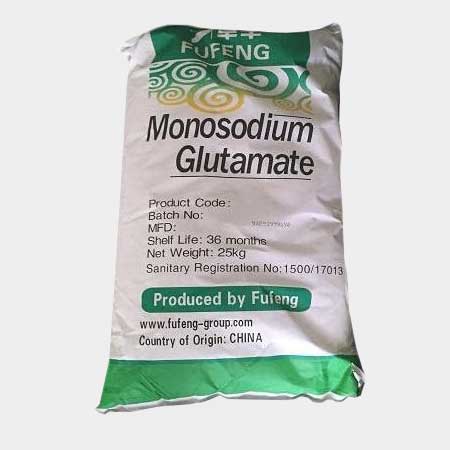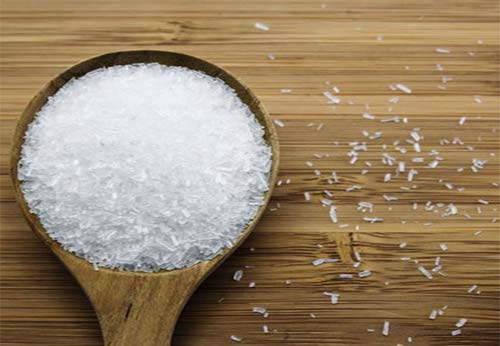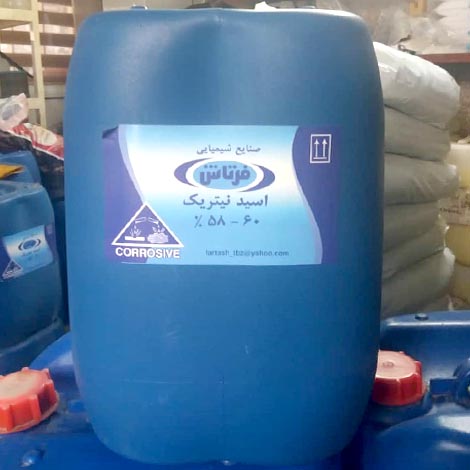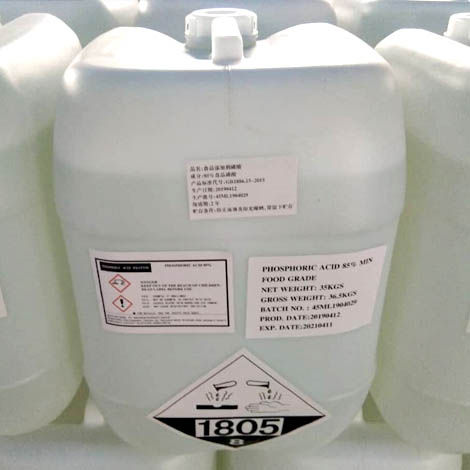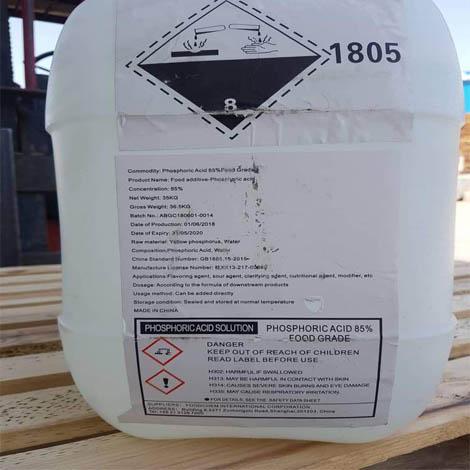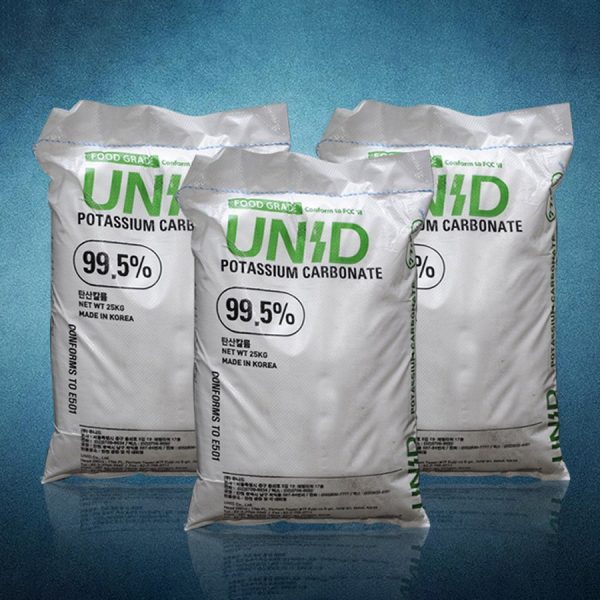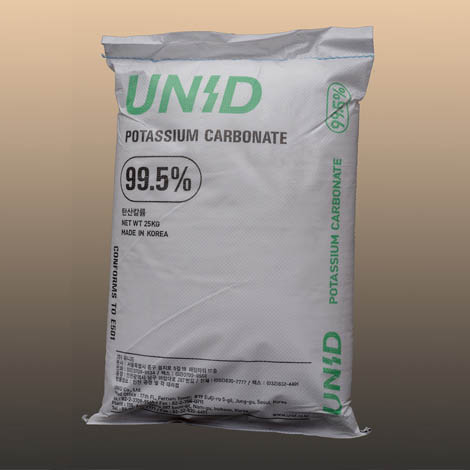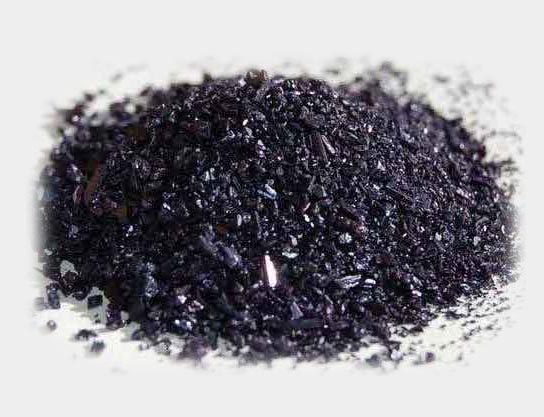light sodium carbonate
Sodium carbonate, Na2CO3, (also known as washing soda, soda ash and soda crystals) is the inorganic compound with the formula Na2CO3 and its various hydrates. All forms are white, water-soluble salts. All forms have a strongly alkaline taste and give moderately alkaline solutions in water. Historically it was extracted from the ashes of plants growing in sodium-rich soils. Because the ashes of these sodium-rich plants were noticeably different from ashes of wood (once used to produce potash), sodium carbonate became known as "soda ash." It is produced in large quantities from sodium chloride and limestone by the Solvay process.
Main applications
In terms of its largest applications, sodium carbonate is used in the manufacture of glass, paper, rayon, soaps, and detergents.
Monosodium glutamate
Monosodium glutamate (MSG), also known as sodium glutamate, is the sodium salt of glutamic acid. MSG is found naturally in some foods including tomatoes and cheese. MSG is used in cooking as a flavor enhancer with an umami taste that intensifies the meaty, savory flavor of food, as naturally occurring glutamate does in foods such as stews and meat soups.
MSG was first prepared in 1908 by Japanese biochemist Kikunae Ikeda, who was trying to isolate and duplicate the savory taste of kombu, an edible seaweed used as a base for many Japanese soups. MSG balances, blends, and rounds the perception of other tastes. MSG is commonly found in stock (bouillon) cubes, soups, ramen, gravy, stews, condiments, savory snacks, etc.
The U.S. Food and Drug Administration has given MSG its generally recognized as safe (GRAS) designation. It is a popular belief that MSG can cause headaches and other feelings of discomfort, known as "Chinese restaurant syndrome", but blinded studies show no such effects when MSG is combined with food in normal concentrations, and are inconclusive when MSG is added to broth in large concentrations. The European Union classifies it as a food additive permitted in certain foods and subject to quantitative limits. MSG has the HS code 29224220 and the E number E621.
Nitric acid
Nitric acid (HNO3), also known as aqua fortis (Latin for "strong water") and spirit of niter, is a highly corrosive mineral acid.
The pure compound is colorless, but older samples tend to acquire a yellow cast due to decomposition into oxides of nitrogen and water. Most commercially available nitric acid has a concentration of 68% in water. When the solution contains more than 86% HNO3, it is referred to as fuming nitric acid. Depending on the amount of nitrogen dioxide present, fuming nitric acid is further characterized as red fuming nitric acid at concentrations above 86%, or white fuming nitric acid at concentrations above 95%.
Nitric acid is the primary reagent used for nitration – the addition of a nitro group, typically to an organic molecule. While some resulting nitro compounds are shock- and thermally-sensitive explosives, a few are stable enough to be used in munitions and demolition, while others are still more stable and used as pigments in inks and dyes. Nitric acid is also commonly used as a strong oxidizing agent.
Persian Calcium Hypochlorite 25kg
Calcium oxychlorides
A confusion sometimes reigns between calcium oxychlorides and calcium hypochlorite. Indeed, the name calcium oxychloride (or calcium hydroxychloride) does not immediately refer to calcium hypochlorite, but is only applicable to the mixed calcium basic chloride compounds remaining unreacted in the bleaching powder, such as, e.g. CaCl2 · 2 Ca(OH)2.
Calcium oxychloride may also be formed in concrete in roads and bridges when calcium chloride is used as deicing agent during winter. Calcium chloride then reacts with calcium hydroxide (portlandite) present in cement hydration products and forms a deleterious expanding phase also named CAOXY (abbreviation for calcium oxychloride) by concrete technologists. The stress induced into concrete by crystallisation pressure and CAOXY salt expansion can considerably reduce the strength of concrete.
Chemical properties
Calcium hypochlorite exhibits both acido-basic and oxydo-reduction properties. It is a relatively strong base.
Calcium hypochlorite solution is basic as the hypochlorite anion can accept a proton from a water molecule leaving a hydroxyُl anion in solution. This basicity is due to the propensity for the hypochlorite anion to accept a proton to become hypochlorous acid, a weak acid:
- ClO− + H2O ↔ HClO + OH−
The hypochlorite anion is also a strong oxidizing agent containing a chlorine atom at the valence I (redox state: Cl+1) which reacts under acidic conditions with the reduced chloride species (Cl–, here the reducing agent) present in hydrochloric acid to form calcium chloride, water and gaseous chlorine. The overall reaction is:
- Ca(ClO)2 + 4 HCl → CaCl2 + 2 H2O + 2 Cl2
Persian Calcium Hypochlorite 30Kg
Calcium oxychlorides
A confusion sometimes reigns between calcium oxychlorides and calcium hypochlorite. Indeed, the name calcium oxychloride (or calcium hydroxychloride) does not immediately refer to calcium hypochlorite, but is only applicable to the mixed calcium basic chloride compounds remaining unreacted in the bleaching powder, such as, e.g. CaCl2 · 2 Ca(OH)2.
Calcium oxychloride may also be formed in concrete in roads and bridges when calcium chloride is used as deicing agent during winter. Calcium chloride then reacts with calcium hydroxide (portlandite) present in cement hydration products and forms a deleterious expanding phase also named CAOXY (abbreviation for calcium oxychloride) by concrete technologists. The stress induced into concrete by crystallisation pressure and CAOXY salt expansion can considerably reduce the strength of concrete.
Chemical properties
Calcium hypochlorite exhibits both acido-basic and oxydo-reduction properties. It is a relatively strong base.
Calcium hypochlorite solution is basic as the hypochlorite anion can accept a proton from a water molecule leaving a hydroxyُl anion in solution. This basicity is due to the propensity for the hypochlorite anion to accept a proton to become hypochlorous acid, a weak acid:
- ClO− + H2O ↔ HClO + OH−
The hypochlorite anion is also a strong oxidizing agent containing a chlorine atom at the valence I (redox state: Cl+1) which reacts under acidic conditions with the reduced chloride species (Cl–, here the reducing agent) present in hydrochloric acid to form calcium chloride, water and gaseous chlorine. The overall reaction is:
- Ca(ClO)2 + 4 HCl → CaCl2 + 2 H2O + 2 Cl2
Phosphoric acid
Phosphoric acid, also known as orthophosphoric acid or phosphoric(V) acid, is a weak acid with the chemical formula H3PO4. It is normally encountered as a colorless syrup of 85% concentration in water. The pure compound is a colorless solid.
All three hydrogens are acidic to varying degrees and can be lost from the molecule as H+ ions (protons). When all three H+ ions are removed, the result is an orthophosphate ion PO43−, commonly called "phosphate". Removal of one or two protons gives dihydrogen phosphate ion H 2PO− 4, and the hydrogen phosphate ion HPO2− 4, respectively. Orthophosphoric acid also forms esters, called organophosphates.
Phosphoric acid is commonly encountered in chemical laboratories as an 85% aqueous solution, which is a colourless, odourless, and non-volatile syrupy liquid. Although phosphoric acid does not meet the strict definition of a strong acid, the 85% solution can still severely irritate the skin and damage the eyes.
Potash carbonate Unid
Potassium carbonate
Potassium carbonate is the inorganic compound with the formula K2CO3. It is a white salt, which is soluble in water. It is deliquescent, often appearing as a damp or wet solid. Potassium carbonate is mainly used in the production of soap and glass.
History
Potassium carbonate is the primary component of potash and the more refined pearl ash or salts of tartar. Historically, pearl ash was created by baking potash in a kiln to remove impurities. The fine, white powder remaining was the pearl ash. The first patent issued by the US Patent Office was awarded to Samuel Hopkins in 1790 for an improved method of making potash and pearl ash.
In late 18th century North America, before the development of baking powder, pearl ash was used as a leavening agent for quick breads.
Potassium permanganate
Powdered acetic acid
Citric acid It occurs naturally in citrus fruits. In biochemistry, it is an intermediate in the citric acid cycle, which occurs in the metabolism of all aerobic organisms.
More than two million tons of citric acid are manufactured every year. It is used widely as an acidifier, as a flavoring and a chelating agent.
A citrate is a derivative of citric acid; that is, the salts, esters, and the polyatomic anion found in solution. An example of the former, a salt is trisodium citrate; an ester is triethyl citrate. When part of a salt
Sanitary paraffin 175 kg barrel
Paraffin wax is mostly found as a white, odorless, tasteless, waxy solid, with a typical melting point between about 46 and 68 °C (115 and 154 °F), and a density of around 900 kg/m3. It is insoluble in water, but soluble in ether, benzene, and certain esters. Paraffin is unaffected by most common chemical reagents but burns readily. Its heat of combustion is 42 MJ/kg.
Paraffin wax is an excellent electrical insulator, with a resistivity of between 1013 and 1017 ohm metre. This is better than nearly all other materials except some plastics (notably Teflon). It is an effective neutron moderator and was used in James Chadwick's 1932 experiments to identify the neutron.
Paraffin wax is an excellent material for storing heat, with a specific heat capacity of 2.14–2.9 J g−1 K−1 (joules per gram kelvin) and a heat of fusion of 200–220 J g−1. Paraffin wax phase-change cooling coupled with retractable radiators was used to cool the electronics of the Lunar Roving Vehicle during the manned missions to the Moon in the early 1970s.Wax expands considerably when it melts and this allows its use in wax element thermostats for industrial, domestic and, particularly, automobile purposes.
Shampoo 10 and 20 liters
Shampoo (/ʃæmˈpuː/) is a hair care product, typically in the form of a viscous liquid, that is used for cleaning hair. Less commonly, shampoo is available in bar form, like a bar of soap. Shampoo is used by applying it to wet hair, massaging the product into the scalp, and then rinsing it out. Some users may follow a shampooing with the use of hair conditioner.
The typical reason of using shampoo is to remove the unwanted build-up of sebum in the hair without stripping out so much as to make hair unmanageable. Shampoo is generally made by combining a surfactant, most often sodium lauryl sulfate or sodium laureth sulfate, with a co-surfactant, most often cocamidopropyl betaine in water. The sulphate ingredient acts as a surfactant, essentially heavy duty soap that makes it easier to trap oil and grease.
Specialty shampoos are marketed to people with dandruff, color-treated hair, gluten or wheat allergies, an interest in using an organic product, and infants and young children ("baby shampoo" is less irritating). There are also shampoos intended for animals that may contain insecticides or other medications to treat skin conditions or parasite infestations such as fleas.





